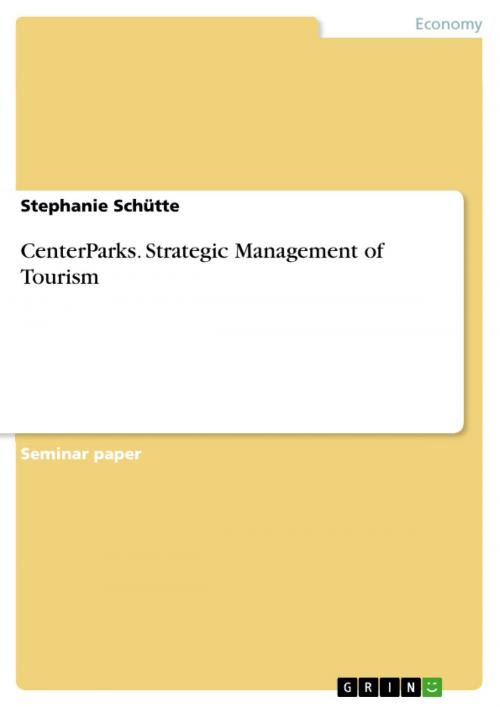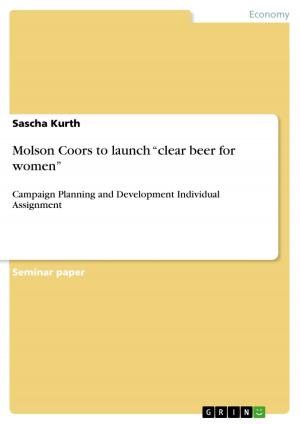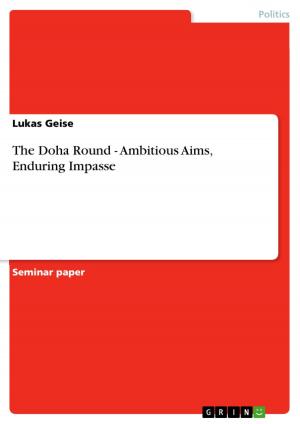CenterParks. Strategic Management of Tourism
Business & Finance, Industries & Professions, Hospitality, Tourism & Travel| Author: | Stephanie Schütte | ISBN: | 9783638158428 |
| Publisher: | GRIN Publishing | Publication: | December 9, 2002 |
| Imprint: | GRIN Publishing | Language: | English |
| Author: | Stephanie Schütte |
| ISBN: | 9783638158428 |
| Publisher: | GRIN Publishing |
| Publication: | December 9, 2002 |
| Imprint: | GRIN Publishing |
| Language: | English |
Seminar paper from the year 2002 in the subject Tourism, University of Lincoln (Tourism), course: Strategic Management of Tourism, 20 entries in the bibliography, language: English, abstract: A key question in strategy research is why companies diverge in their conduct and profitability. Researchers have determined to view companies as autonomous entities, striving for competitive advantage from either external sources, or from internal resources and capabilities. (Gulati/Nohria/Zaheer (2000): 203) Certainly, the objective of a company's strategy is achieving competitive advantage, but additionally, the strategy itself is a source of competitive advantage. (Luffman/ Lea/ Sanderson/ Kenny (1996): 102) The intensifying competition on the 'world marketplace' (Wright/ Kroll/ Parnell (1998): 281) is a great challenge for strategic management. Understanding of how technology and globalization affect a company's competitive positioning and creating global competitive advantage are the most important determinants of strategic management today. European tourism is forced to respond to the pressure built by the globalisation of travel markets. Travel destinations become more and more remote while travel times become ever shorter. The developed tourism countries are consequently faced with cutthroat locational competition and forced to innovate and to lower prices. It is now widely understood in tourism locations that simply selling landscape, nature or comfortable hotel beds is no longer sufficient. [...] Some of these artificial adventure and holiday worlds, such as Disneyland or CenterParcs, have meanwhile developed into so-called mega-tourism projects and are setting new standards in the fight for guests and visitors. Their size permits them to go in for global marketing and to substantially reduce the costs per visitor. The business formula is larger equal less expensive. This formula disregards the follow-up costs caused by growing traffic volumes, noise, accidents, landscape use, and environmental pollution. (Freyer (1998): 117) Strategic management applies to managerial decisions that fuse the organization to its environment, guide internal activities, and concern organizational long-term performance. The strategy determines markets and products or services, it is about selecting where and how to compete, which organizational structure has to be established, how can employees be motivated, and how to allocate resources to create the greatest overall success. (Houlden (1996): 13; Stahl/Grigsby (1997): 21) [...]
Seminar paper from the year 2002 in the subject Tourism, University of Lincoln (Tourism), course: Strategic Management of Tourism, 20 entries in the bibliography, language: English, abstract: A key question in strategy research is why companies diverge in their conduct and profitability. Researchers have determined to view companies as autonomous entities, striving for competitive advantage from either external sources, or from internal resources and capabilities. (Gulati/Nohria/Zaheer (2000): 203) Certainly, the objective of a company's strategy is achieving competitive advantage, but additionally, the strategy itself is a source of competitive advantage. (Luffman/ Lea/ Sanderson/ Kenny (1996): 102) The intensifying competition on the 'world marketplace' (Wright/ Kroll/ Parnell (1998): 281) is a great challenge for strategic management. Understanding of how technology and globalization affect a company's competitive positioning and creating global competitive advantage are the most important determinants of strategic management today. European tourism is forced to respond to the pressure built by the globalisation of travel markets. Travel destinations become more and more remote while travel times become ever shorter. The developed tourism countries are consequently faced with cutthroat locational competition and forced to innovate and to lower prices. It is now widely understood in tourism locations that simply selling landscape, nature or comfortable hotel beds is no longer sufficient. [...] Some of these artificial adventure and holiday worlds, such as Disneyland or CenterParcs, have meanwhile developed into so-called mega-tourism projects and are setting new standards in the fight for guests and visitors. Their size permits them to go in for global marketing and to substantially reduce the costs per visitor. The business formula is larger equal less expensive. This formula disregards the follow-up costs caused by growing traffic volumes, noise, accidents, landscape use, and environmental pollution. (Freyer (1998): 117) Strategic management applies to managerial decisions that fuse the organization to its environment, guide internal activities, and concern organizational long-term performance. The strategy determines markets and products or services, it is about selecting where and how to compete, which organizational structure has to be established, how can employees be motivated, and how to allocate resources to create the greatest overall success. (Houlden (1996): 13; Stahl/Grigsby (1997): 21) [...]















